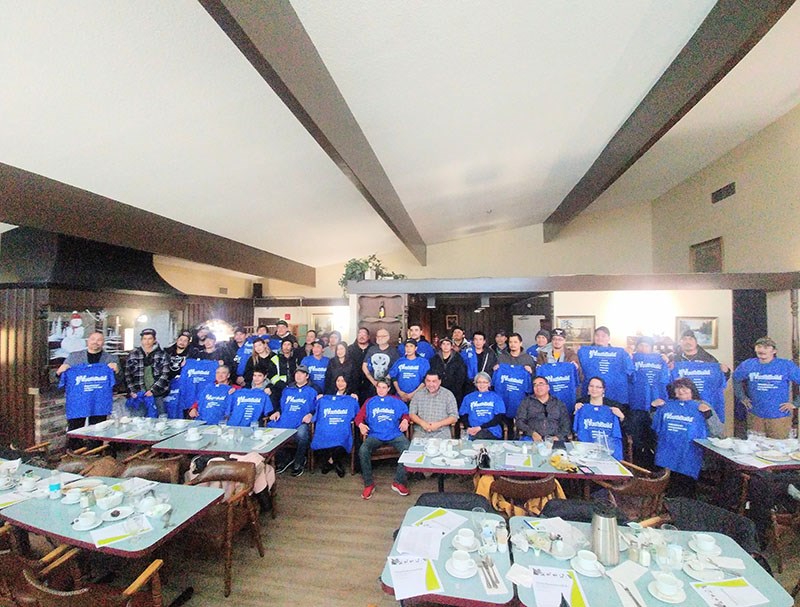Members and leadership of the Nisichawayasihk Cree Nation (NCN) gathered in Thompson on Feb. 5, to celebrate its economic development, education, energy independence and unprecedented infrastructure development through its Atoskiwin Training and Employment Centre (ATEC).
“The trainees’ incomes went from $311 per month in social assistance payments, to $3,338 per month as first-year apprentices,” said Lawrence Deane of the Canadian Centre for Policy Alternatives (CCPA), who presented a CCPA report on NCN at the gathering. “The students were able to put in their required hours of on-the-job training as apprentices. As residents of the community, the students were able to spend significant amounts of their earnings at the local store, at the gas station, in payments to their housing providers, and to childcare providers.”
NCN’s ambitious infrastructure project, through ATEC, has resulted in the construction of numerous housing units, and a 14,000-square-foot fabricating facility that manufactures super-efficient, mould resistant, SIP wall panels used in the community’s expanding construction business. The goal is net-zero housing (which produces as much energy as it consumes) using supplemental solar power and simple but high-tech construction methods.
Jim Moore, executive director at ATEC and former chief of the First Nation, is happy with the expanding innovation at NCN.
“Today we are celebrating a couple things,” he said. “ATEC has been recognized internationally as one of the YouthBuild International centres under Indigenous YouthBuild Canada. ATEC has been very successful in developing programming that leads to employment.”
Moore said ATEC learners are being trained in cutting-edge, green-tech construction.
“We built the manufacturing facility for the SIP panels that our youth are learning to fabricate,” he said. “They are also learning to market, and use that material to build new homes. (And) at ATEC, we get no core funding from the federal government, the province, or our own government. Our revenue is based on proposals and tuition, and our students are learning business concepts too.”
Moore explained that ATEC training targets young, unemployed people.
“We pick students from the Not in Employment and Education Training (NEET) population,” he said. “That population is growing. Last count in Nelson House was 800. We developed an intake process where they take academic assessments and career assessments to narrow down their field of interest. And then they go through one week of social readiness, where they learn about themselves. They determine themselves where they’re at.”
NCN now has approximately 40 people in several different trades at various levels of apprenticeship.
“We’ve graduated maybe 30 business students as well,” he explained. “We have an 84 per cent success rate in placing people in employment.”
Using alternative energy in remote communities can be a major win, both economically and for the environment, said Deane in his report. Many northern communities rely on diesel fuel, which is dirty and expensive, but that is changing.
“Many remote communities are outgrowing their capacity for diesel generation,” he said. “It is common to have load restrictions because of limited supply. This means that the number of new houses or buildings that can be added in these communities is limited. In the Northwest Territories, there are more than 200 solar installations in remote communities.”
NCN leaders plan to replicate ATEC, creating a pan-Canadian education, business, and healing movement among Indigenous communities.
“Graduates will be encouraged to lead and manage social enterprises that emerge from this training,” said Deane. “Indigenous YouthBuild Canada will develop local chapters tailored to local conditions and localized cultural conditions.”




